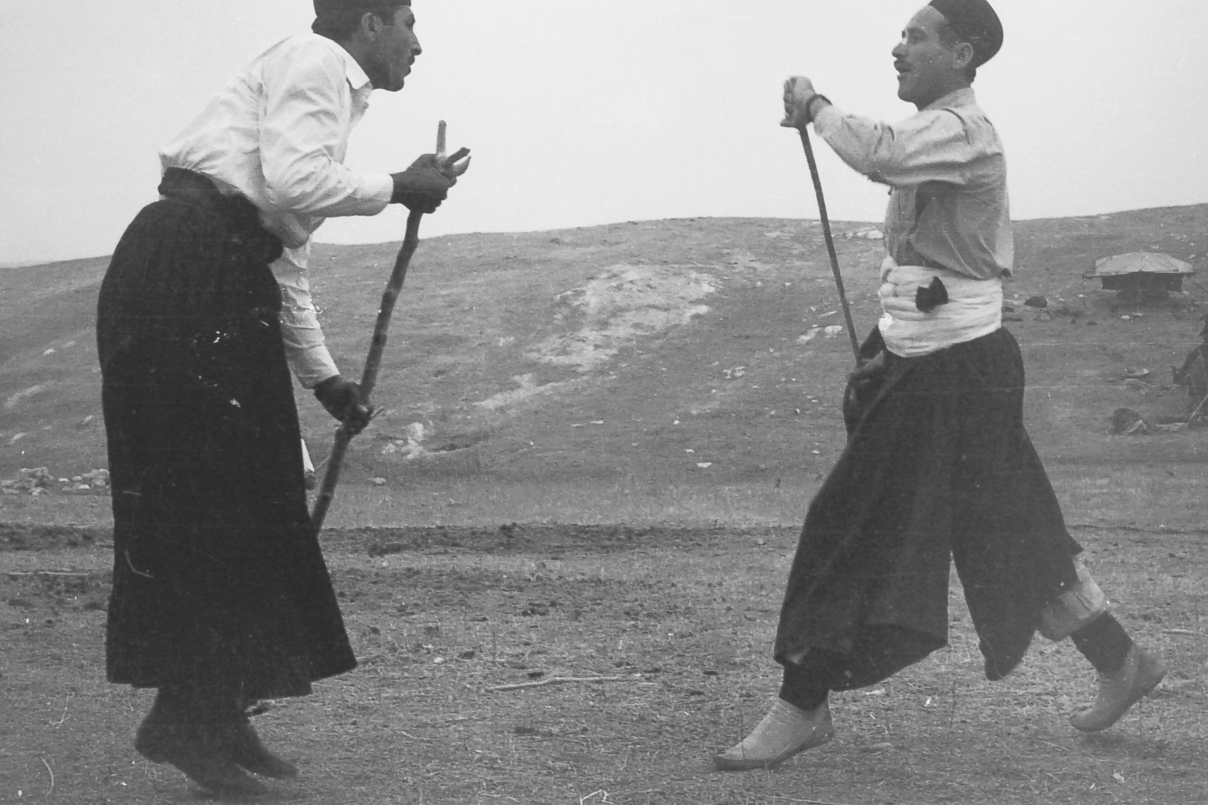Dance and the Bakhtiari
Dance and the Bakhtiari
Dance and the Bakhtiari was a central focus of David’s fieldwork and analysis. He saw in dance an expression of the basic principles of ‘being Bakhtiari’, and of how they learnt to move through the physical, social, political and spiritual world.
David was interested in all forms of movement. He struggled to master horse riding, which was crucial to participation in the migration, but he learnt the Bakhtiari dances with alacrity, drawing on his background as an excellent Scottish dancer. His field diary records that he participated in dancing within a few days of arriving among the Bakhtiari. He writes about dance with a participant’s knowledge of the rhythms, steps and feelings involved.
1. ‘Dance and the expression of Bakhtiari Identity’
‘Dance and the expression of Bakhtiari Identity’ was presented to the ‘Festival of Popular Traditions’ 12-18th October 1977 in Isfahan, Iran. The paper analyses Bakhtiari dance as an expression of social being, and as an essential aspect of Bakhtiari life. This paper is particularly interesting as it was written at a time when dance ethnography was not widely appreciated. In many regards, it anticipated later work on dance, movement and the body.
2. Dancing the World Archive
Three unpublished texts describe in detail the men’s stick dance (Chub bazi), the circle dance of both men and women (Chupi) and the concluding dance, for women only (Aqab bazi).
In Text 3 ‘Dancing the world’ he draws out the spiritual and symbolic aspects of dance.

3. Listen to the music
David recorded the music for these dances, found in the archive, on reels 03, 17 and 18 for chup bazi and reel 07 for ‘women’s dance music’ – now also copied and available electronically.
Lecturing on Dance
David had a dramatic lecturing style, often dressed in Bakhtiari clothes & enacting the stick dance. He explained how the dance’s forms of movement, alertness and ability to respond to a changing environment were mirrored in the aptitudes needed to be a Bakhtiari, and in particular to be a successful leader.
To enact the dance, he needed a male ‘protagonist’, and would gleefully recruit one of his male PhD students, which could be both exhilarating and painful, as Malcolm Young recalls:
…we went off to Edinburgh and to see him dance in full Bakhtiari ensemble. It was a memorable occasion, or so I recall. Most of David’s family were there – his mother, brother, and sister in-law. He did his famous change of clothing, from western to native costume, talking all the while and moving, moving, moving. Then he demonstrated the dances.
After a minute or so, he said, ‘Of course, you need a protagonist here, because these stick dances are about conflict’, and he gave us much of the theory this paper encompasses [‘Dance and the expression of Bakhtiari identity’]. And then he came to the audience, hauled me out of the crowd and took me centre stage with himself. He gave me a stick, started the tape of Bakhtiari music and made me dance with him. All the while he defended himself as he moved and turned and swiped at my shins and thighs, my arms and head. Very rhythmic I recall…
Malcolm Young
The Dancing the World archive contains further information. Follow these links for pdf files detailing Bakhtiari dance, the Chub Bazi (stick dance) and Chupi dance.
